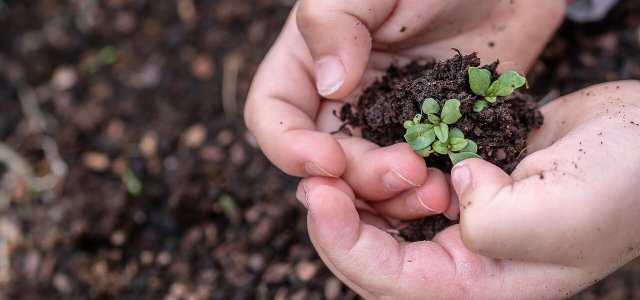
Stratifying seeds can help with seeds that just won’t germinate. In this article you will learn when stratification is useful against germination inhibition and how to go about it.
Not all seeds are ready to germinate from the start. Some plants need an external stimulus to get their seeds to form shoots. Stratification is a method of removing the so-called germination inhibition of these plant species. Inhibition of germination is especially common for cold-germinating plants, whose seeds mature in the summer or fall but are not expected to develop into young plants until the following spring.
Theoretically, you can make all plants with germination inhibition germinable by stratifying. However, since the exact stratification process depends on the specific type of inhibition, you should know which germination inhibitions occur in which plants:
Germination inhibition by organic acids in the pulp occurs in various stone fruits (peach, cherry, bird cherry, wild rose).
Germination inhibition by hormone and enzyme-like substances protects, for example, yew, snowball or witch hazel from premature germination. You can cancel them by cold stratification or warm-cold stratification.
Mechanical germination inhibition is especially common for woody plants with hard-shelled seeds, such as beech, oak or chestnut.
Young plant nurseries in particular rely on stratification because the process ensures that the seeds emerge evenly. Another advantage of stratification is that you’ll have a higher yield and fewer low-quality plants later on.
Tip: If you are unsure whether old seeds or seeds you don’t know will grow into young plants, you can test their germination with a germination test before sowing them.
How to stratify your seeds
Since there are so many different forms of germination inhibition, you must also proceed differently when stratifying. Some plants even have several inhibitions at the same time, so you should combine different stratifications for them. Below we present the most common methods of stratification:
Stratify berry and stone fruits: The organic acids in the pulp of fruits ensure that many stone fruits, such as the bird cherry or the peach, have a natural inhibition to germination. However, you can get around this relatively easily by following these steps:
- Immediately after harvesting, lay out the fruit in a large area in a sunny and airy place.
- Wait a few days until the pulp begins to rot.
- Remove the pulp from the seeds by rubbing them between your hands.
- Wash the seeds thoroughly and then dry them. This will prevent them from germinating directly.
- Store the seeds in a dry and airtight container until sowing.
Cold stratification: Cold stratification should be used primarily for cold-germinating plants whose seeds only become germinable after a cold period. You will need a box, a fine-mesh net and some planting substrate.
- Place the fine-mesh net at the bottom of the box to keep mice away from it later.
- Fill the box with sharp-edged screed sand. Do not use compost or normal garden soil, as the seeds will quickly start to mold in it.
- Mix the cleaned seeds into the planting substrate and water everything lightly.
- Place the box in a shady and protected place, where the temperature is between two and eight degrees Celsius.
- Turn the substrate with the seeds once a week, so that the moisture is evenly distributed and the sand grains can roughen the seed coats. Let the seeds stratify for several weeks.
Warm-cold stratification: Seeds with particularly hard shells are exposed to higher temperatures around 20 degrees at the beginning of stratification. With this two to four weeks long warm phase you accelerate the swelling of the seeds.
- As with cold stratification, prepare a box with netting and substrate in which to store the seeds.
- First place the box in a place with an ambient temperature of 20 degrees Celsius or more for two to four weeks.
- For the cold stimulus, place the box in a colder location with temperatures between two and eight degrees Celsius.
The right time for sowing after stratification
Check the seed at least once a week during stratification. When you discover the first cotyledons, you can dig the seeds out of the box and sow them in the garden. Depending on how big the seeds are, you can separate them from the sand beforehand with a sieve or collect them individually from the sand. If you already have the first sprouts in January, you should not sow the seeds yet, but instead store them at minus two to minus four degrees until early spring. This will prevent the seeds from sprouting or dying.
By the way: We recommend buying organic seeds, which are not genetically modified, for example. But you can also grow seeds yourself.

